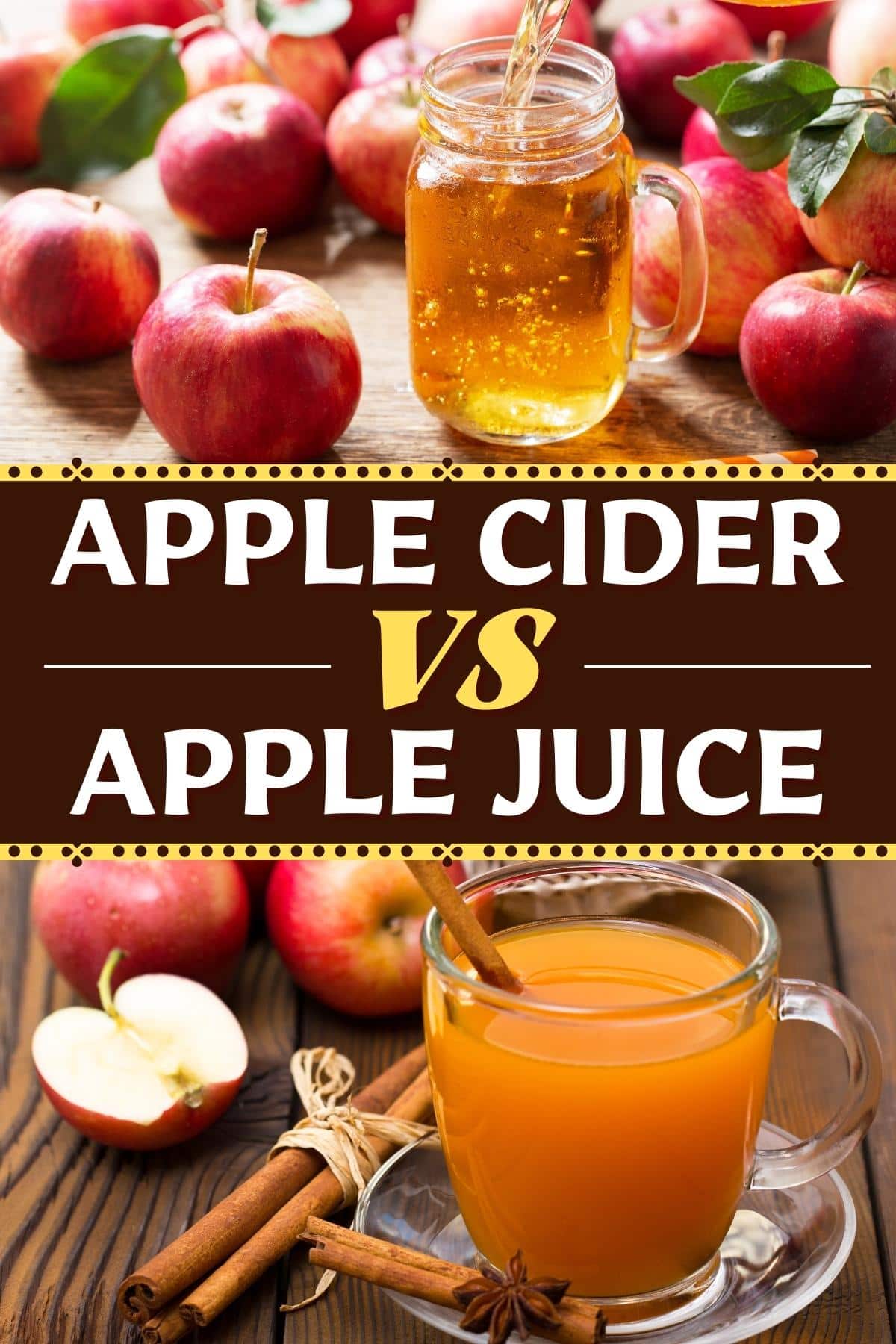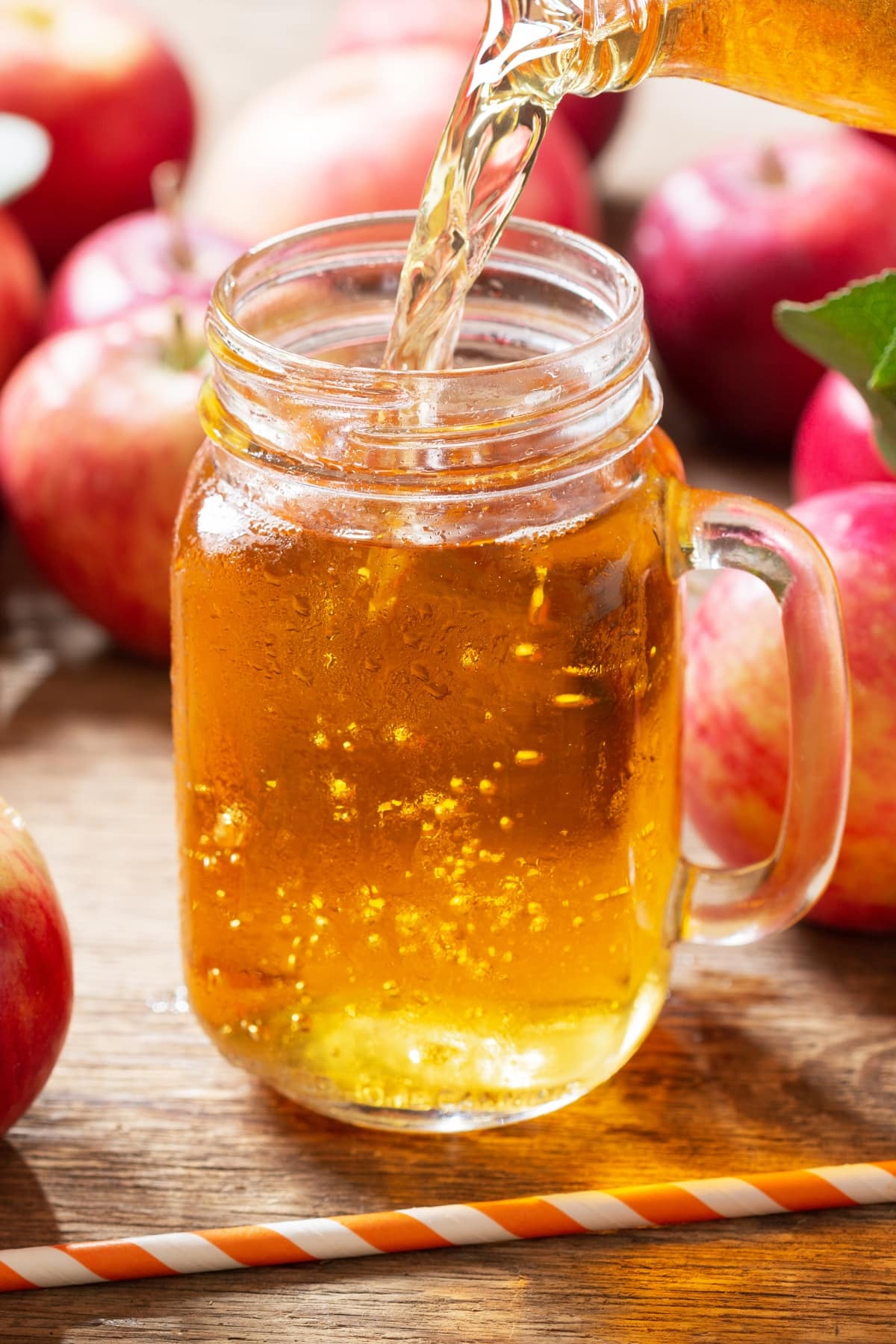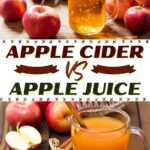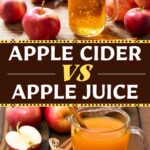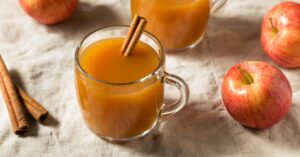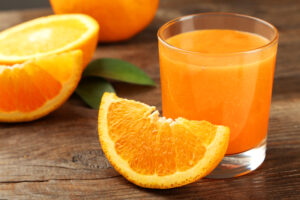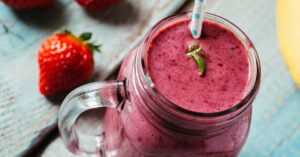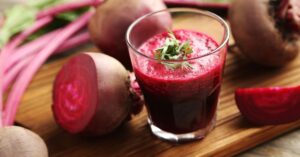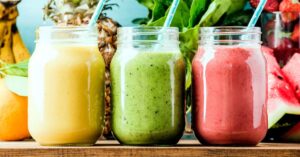Apple cider is an unfiltered, raw beverage made by crushing apples, including their skin and pulp. It has a cloudy appearance.
Apple juice is a filtered, clear liquid obtained by extracting the juice from apples. It has a longer shelf-life than apple cider.
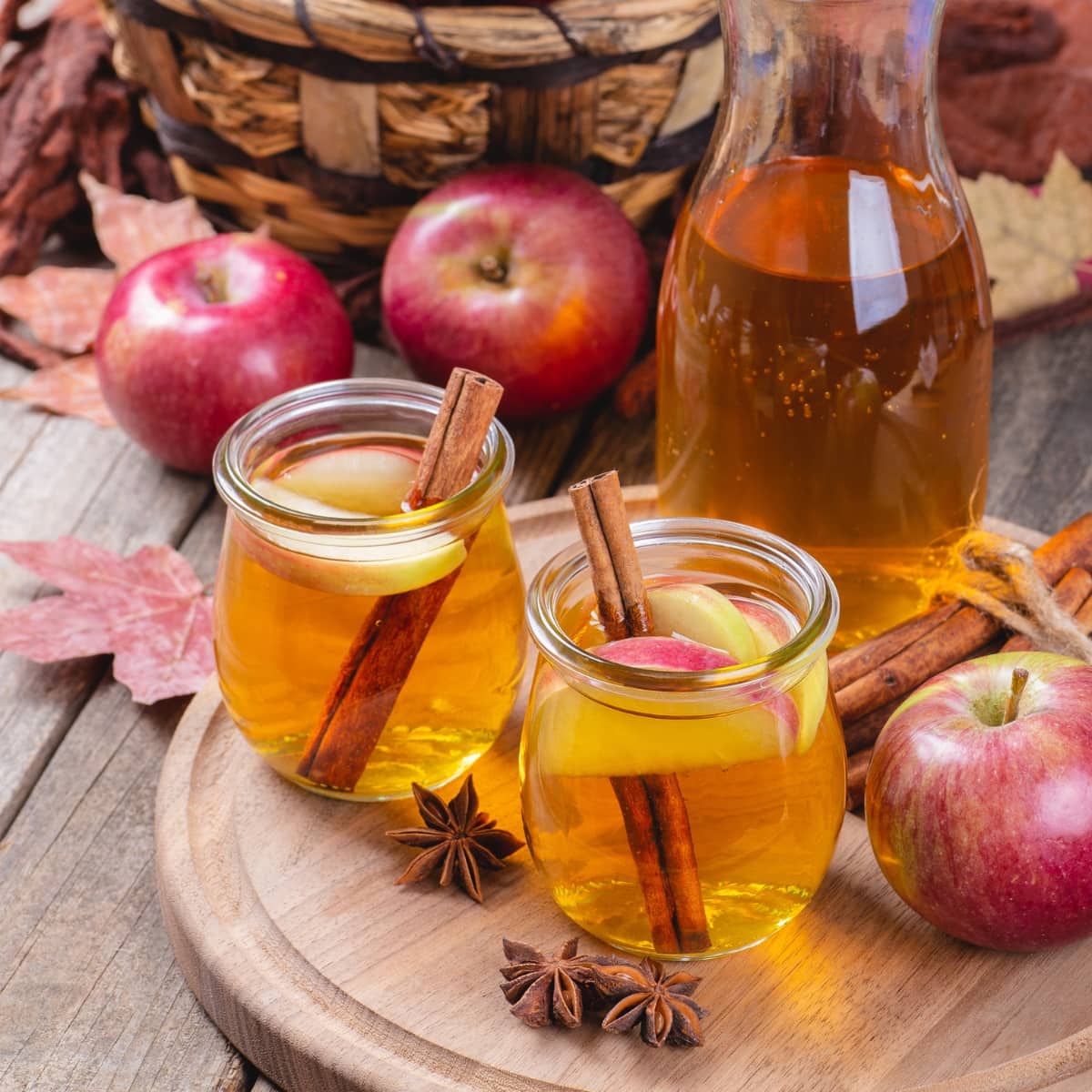
These fall-flavored beverages both come from the same source. And yet, their distinct flavors and production processes set them apart.
Join me on a deeper exploration into apple cider vs. apple juice. From flavor to availability, let’s uncover the differences.
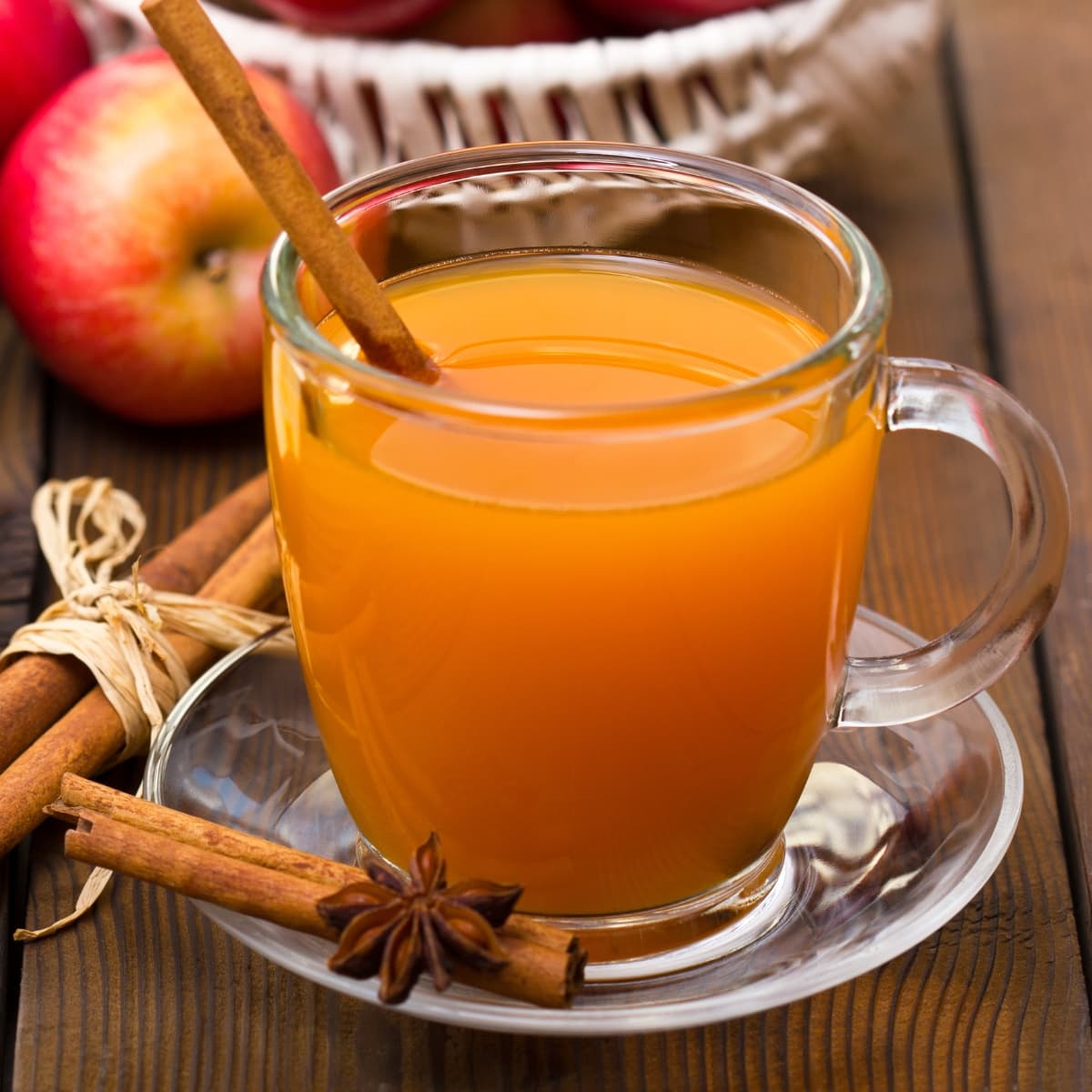
What Is Apple Cider?
Apple cider is a raw beverage made from freshly pressed apples.
Unsweetened and unfiltered, this drink requires minimal processing. It’s commonly served hot and has a big apple flavor. Sometimes, you can find it pasteurized. Typically, though, it’s not.
When apple cider sits too long, the sugars naturally ferment. As a result, it can taste a little boozy and fizzy.
Don’t confuse this with hard apple cider, though! Hard cider is intentionally fermented to create alcohol.
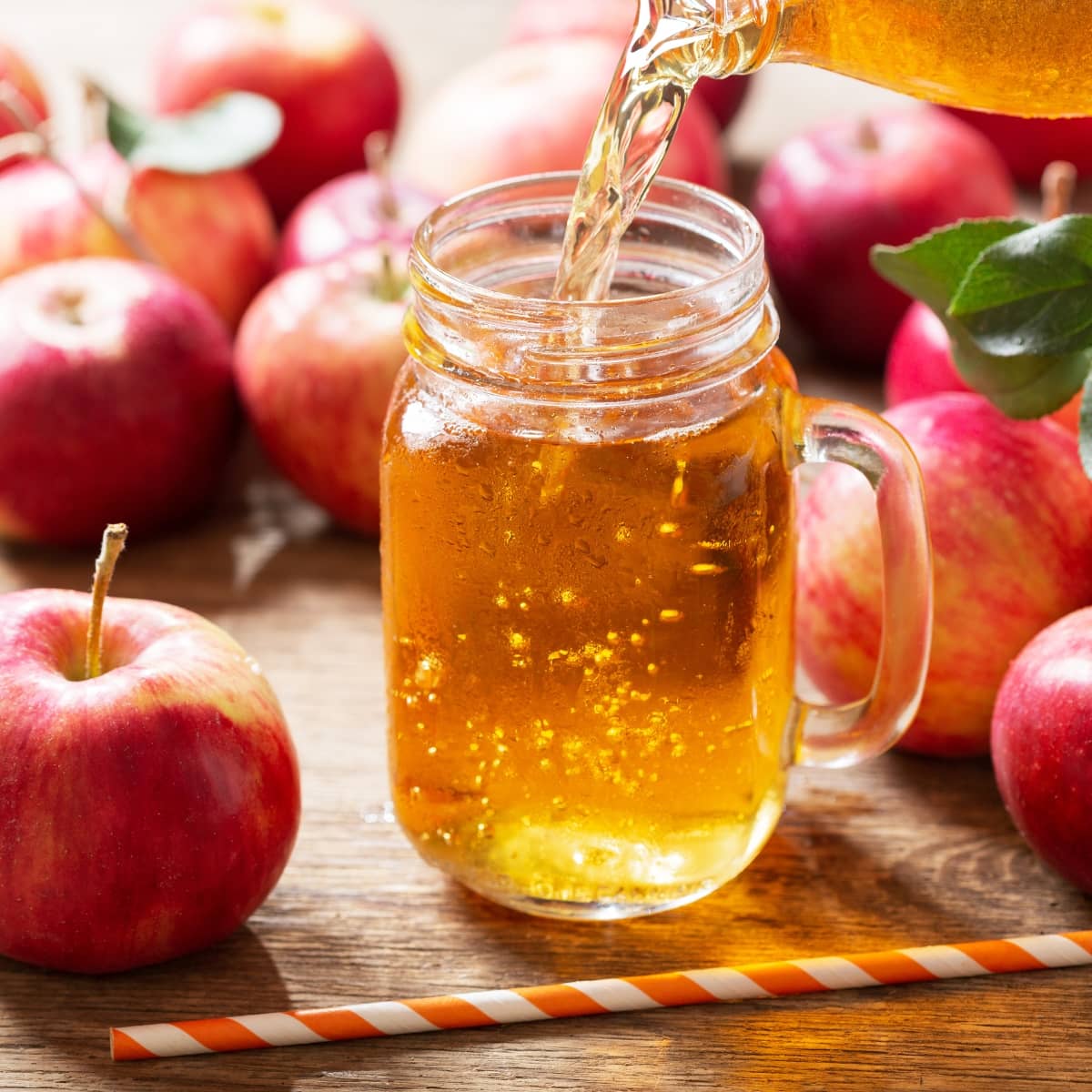
What Is Apple Juice?
Apple juice is a sweetened beverage made from filtered and pasteurized apples. Often, it includes added sweeteners and preservatives.
The flavor is sweet, crisp, and refreshing. Unlike apple cider, apple juice has a thinner mouthfeel because of the filtration process.
Available in juice boxes, bottles, and frozen condensed containers, it comes in many forms. Like apples themselves, you can find apple juice year-round.
Apple Cider vs. Apple Juice (What’s the Difference?)
Both are sweet, crisp, and refreshing. And they’re both made with apples. But make no mistake, these two drinks are not the same.
Here are the main ways you can tell these beverages apart.
Processing
The biggest difference is how they’re processed.
Apple juice undergoes filtration and pasteurization. Store-bought apple juice also usually includes added water, sugar, and preservatives.
Apple cider is unfiltered, unpasteurized juice from freshly pressed apples. Sometimes, you find pasteurized apple cider. But this is not as common.
Color
Compare these beverages side by side, and the difference is clear.
Apple cider is cloudy and golden-brownish. You may also see some of the apple solids floating in it since it’s unfiltered.
Apple juice is clear and has a golden color. The filtration process removes all the solids, making it transparent.
Taste
Apple cider has a tangy, full-bodied apple flavor.
Spiced apple cider will include additional warming spices. However, these aren’t common in the regular version.
Apple juice is crisp, light, and sweet. Removing the solids gives it a thinner, more watery mouthfeel.
Temperature
Hot or cold, you can consume both drinks either way. However, one is more common than the other for each.
Apple cider is usually a hot beverage.
However, some people prefer drinking it cold. You can even serve it on the rocks in an apple-packed fall cocktail for a refreshing libation.
But there’s no right or wrong. It’s merely a matter of preference.
Apple juice is almost always served cold. You can heat it if you like, but it’s less common.
Availability
You can find apple juice year-round.
It’s a common item found in the refrigerated and dry goods section. You can even find it condensed in the freezer food aisle.
Apple cider has limited availability. It’s mainly found during fall and winter. If you’re craving a cup, you can make your own. Apples are available year-round, so you have the main ingredient you need.
Shelf Life
Like availability, shelf life also varies.
Unopened, unrefrigerated apple juice can last up to 2 years. Even opened apple juice can last a pretty long time. (As long as you refrigerate it, that is.)
Apple cider has a shelf life of about 1 to 2 weeks. Also, you need to refrigerate it because it’s unpasteurized and perishable.
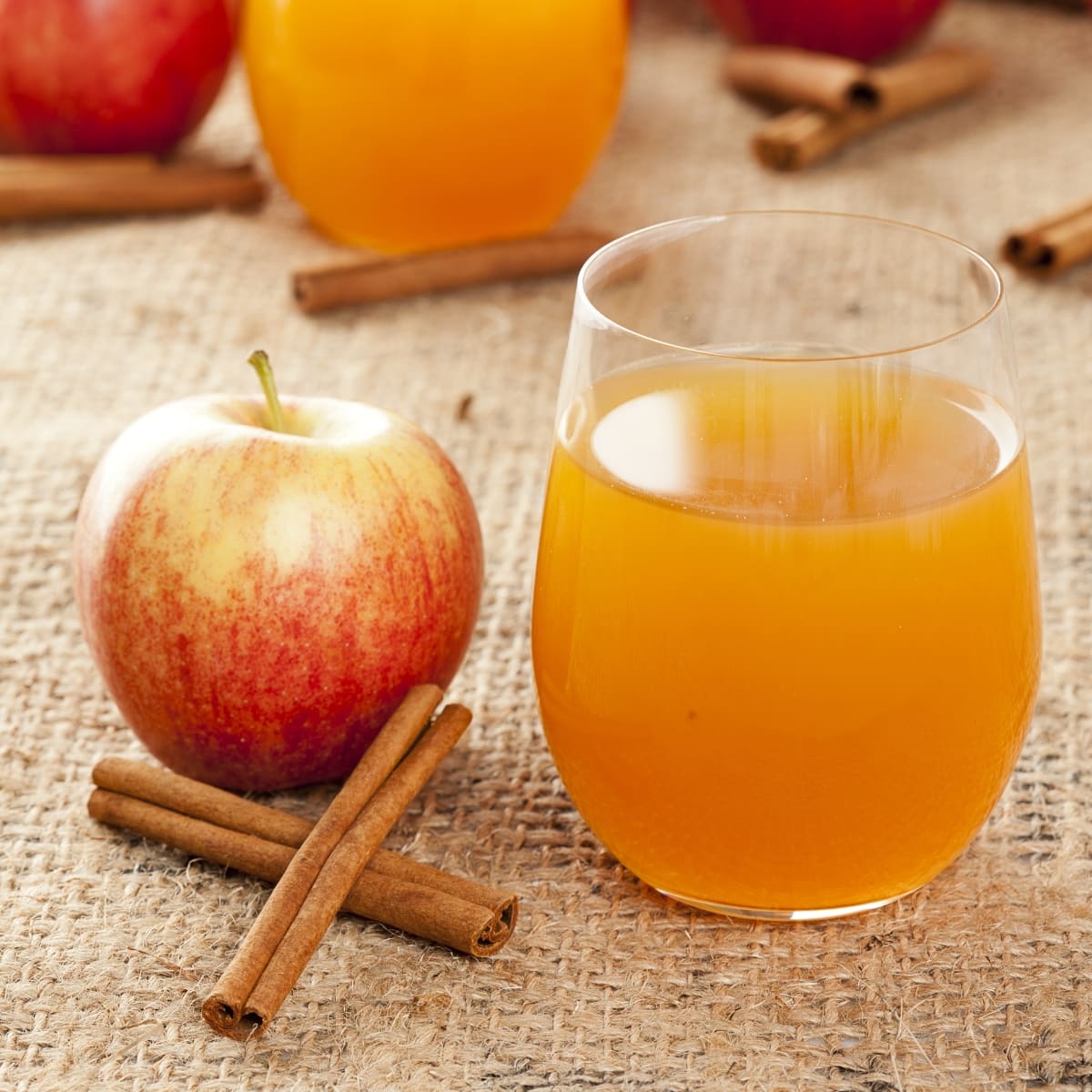
Can You Substitute Apple Juice for Apple Cider and Vice Versa?
Yes, you can swap out one for the other in recipes! However, pick your juice wisely.
Apple juice is much sweeter than apple cider. So look for a brand that doesn’t include added sugars. You can also cut down the sugar in the recipe you’re making.
Also, keep in mind that apple cider has a tangier flavor. So you can add an acid like apple cider vinegar for a comparable flavor.
Apple cider also might be too tangy. In that case, use a juice like pear and white grape juice.
Apple Cider vs. Apple Juice (Which Is Better?)
The better option depends on your taste preference.
For a cold refreshment, apple juice is the clear winner. The crisp and sweet flavor is thirst-quenching.
However, many apple juice brands include added sugar and preservatives. If you prefer to skip the added ingredients, look for fresh sugar-free apple juice.
For a warm fall beverage, apple cider is hands down the clear choice. It’s fantastic served hot and doesn’t have extra sugar.
